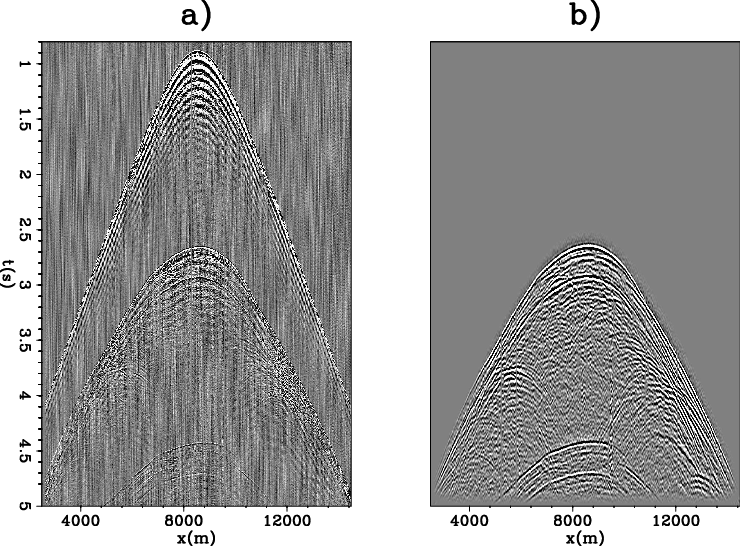|
|
|
|
Least-squares reverse time migration for the Cascadia ocean-bottom dataset |
Since we only use the down-going wavefield, only acoustic separation above the seafloor is needed. We used the adaptive decomposition method of Schalkwijk et al. (1999).
These data are bandpassed between 5 and 45 Hz to avoid dispersion in the time-domain finite-difference calculation. These data before and after pre-processing are shown in Figure 5.

|
|---|
|
dataCom
Figure 5. (a) A hydrophone common receiver gather (CRG) before pre-processing and (b) down-going data after pre-processing. |
|
|
Figure 6 (a) shows the migration velocity used for our RTM and LSRTM. The velocity ranges from 1480m/s in the water column to 1820m/s in the sediment layer. The BSR lies at an approximate depth of 1500-m with a velocity inversion.
|
|
|
|
Least-squares reverse time migration for the Cascadia ocean-bottom dataset |